
12 Critical Email Marketing Metrics You Need to Track
Email marketing is a powerful marketing channel for attracting, connecting, and converting prospects and customers. One of the biggest advantages of running an email marketing campaign is that 99% of email users check their emails daily.
There are more active users using emails than all other social media platforms combined. Neglecting one of the most powerful online marketing tools is at your own peril. According to Content Marketing Institute, email newsletters are the best way to nurture and convert leads.
Email marketing metrics are the statistics you use to gauge the effectiveness of your email marketing campaign. There are tons of email marketing metrics out there, some extremely useful to you, and others not so relevant.
How do you know which email marketing metrics to focus on and which not to pay much importance to?
In this article, you will learn the 12 most critical email marketing metrics you need to track if you want to run a successful email marketing campaign.
It is highly recommended to read this article about the best email marketing services.
Critical Email Marketing Metrics Everyone Should Track
Let’s get started:
Open Rate
Open rate is the first email marketing metric you should check on every campaign. It is expressed as the percentage of email recipients that click open your email.
A good open rate means you have a great subject line that hooks your recipients or you have a good reputation for delivering value-packed emails based on your previous emails.
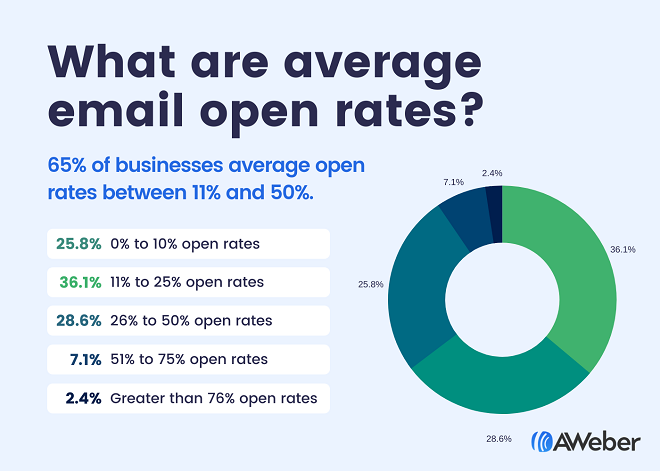
Source: AWeber
Open rate is only counted for emails that contain images when those images are loaded. The problem is that someone can open your email and have image-blocking features that do not allow images to load automatically. If the person doesn’t load the image, it doesn’t get counted as an opened email.
Open rate is however a vital metric utilized by digital marketers when running campaigns with email A/B testing.
The formula for calculating open rate is: (Number of Messages Opened ÷ Number of Messages Delivered) x 100

Source: Rejoiner
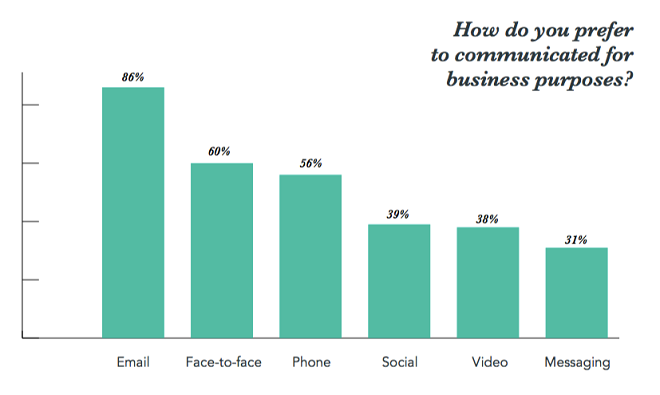
Source: Ariel Lim
Clickthrough Rate
Clickthrough rate (CTR) refers to the percentage of your email recipients who clicked on the link you added to your email.
Digital marketers use clickthrough rates to get insights into how engaging their emails are and what kind of links best appeal to their subscribers.
If you run an eCommerce store or have offered to promote in your emails, the clickthrough rate helps you gauge your email list responsiveness to your emails.
The formula for calculating the clickthrough rate is: (Number of Clicks ÷ Number of Delivered Emails) x 100.
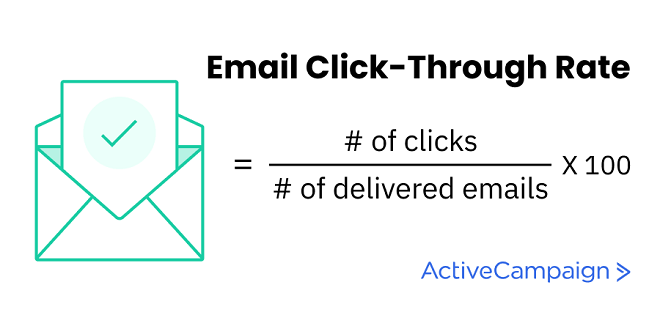
Source: ActiveCampaign
Conversion Rate
Conversion rate is the percentage of email recipients that answered your call-to-action such as making a purchase or filling out a form.
It doesn't really matter what kind of email marketing tools or products, like WordPress email marketing plugins or online SAAS you are using, it is the most important email marketing metric used by email and digital marketers.
The reason why it is so important is that the conversion rate ties directly to the overall aim or goal of the campaign.
For you to measure your conversion rate efficiently, you need to integrate the mass email service you use to send your emails with your website builders to give them access to your web analytics.
Some of the best mass email services are Mailchimp and ActiveCampaign.
Conversion rate is valuable as it shows you how successful you are at generating prospects and leads with your emails.
The formula for calculating conversion is: (Number of email recipients who answered the call-to-action ÷ Total emails delivered) x 100.

Source: Instapage
Bounce Rate
Bounce rate is the percentage of your sent emails that do not enter into your recipient’s inbox. Many things can cause email to bounce such as email provider spam filters and wrong email address.
There are two types of bounce that top email marketers track, hard bounce and soft bounce.
Soft bounce refers to a temporary issue with the recipient’s email such as the delay from the recipient’s server and filled inbox.
Hard bounce on the other hand is a result of wrong and closed email addresses. If the recipient address you have is an invalid or closed one, your email will not arrive in their inbox no matter how many times you resend it.
If you have emails that are incorrect or closed in your email list, remove them instantly as they hurt many other email marketing metrics such as open rate.
Bounce rate does not directly affect the overall goal of your marketing campaign. However, Email Service Providers (ESPs) check your bounce rate to determine your reputation. A high bounce rate (resulting from hard bounce) makes you look like a spammer in the eyes of ESPs.
The formula for calculating bounce rate is (Sum of Bounced Emails ÷ Total Emails Sent) x 100.
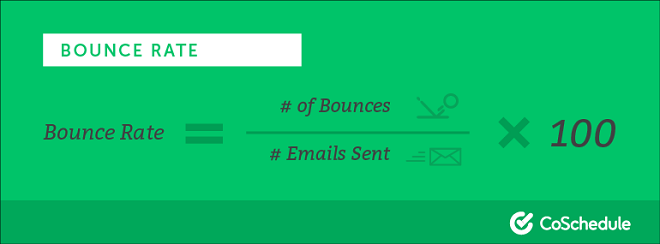
Source: CoSchedule
List Growth Rate
List growth rate refers to the growth or reduction of your email list. Tracking your list growth rate is important as it allows you to get more information about the performance of your email newsletters.
A declining email list is a sign that you are not giving your email newsletter subscribers enough value to keep them. The average email list declines by 22.5% every year. You need to pay attention to your email list and ensure you keep adding new subscribers regularly to boost your email marketing campaign goals.
The formula for calculating list growth rate is: (Sum of New Subscribers) – (Sum of Unsubscribes + sum of Spam Complaints) ÷ (Total Number of Email Address on Your Email List) x 100.

Source: Kickdynamic Blog
Email Sharing or Forwarding Rate
Email sharing or forwarding rate is the percentage who shared your email content with other email addresses or their social media platforms via the “Share This” button.
When people share your emails with others and they like what they read, they can ask to subscribe to your email list.
Conversion is the number one goal of every marketing campaign. However, conversion does not directly bring in new contacts. Tracking your email sharing or forwarding rate will help you attract new leads.
The formula for calculating email sharing or forwarding rate is: (Number of Clicks on a Share/Forward Button ÷ Total Number of Delivered Emails) x 100.

Source: OptinMonster
Overall ROI
Overall ROI refers to the total return on investment you get from your marketing campaign. The average ROI for every dollar spent on email marketing is $42.
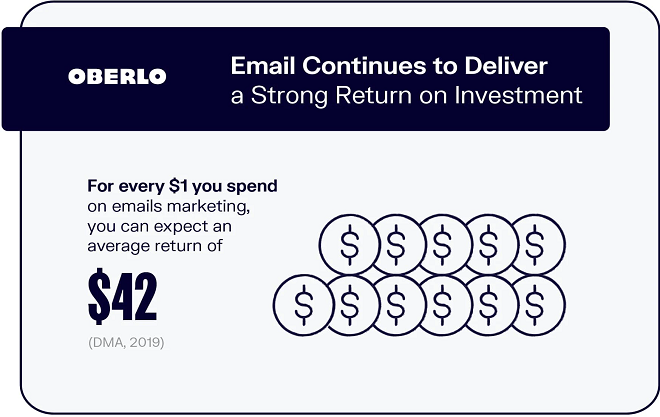
Source: Oberlo
There are numerous ways to calculate the ROI generated from your email marketing campaign.
Overall ROI is an important email marketing metric to track because it translates directly to your potential revenue and the goal of your email marketing campaign.
The formula for calculating your email sharing or forwarding rate is: (Monetary Value $ of Additional Sales Made – Monetary Value $ Invested in the Campaign) ÷ (Monetary Value $ Invested in the Campaign) x 100.

Source: OptinMonster
Campaign ROI
Campaign ROI is the ratio of the total revenue generated from a particular email marketing campaign against the total amount spent on the campaign.
Your email marketing campaign is not effective if you do not track the ROI for each campaign. Such data will help you identify why certain emails attract a higher ROI and while certain emails struggle to generate returns.
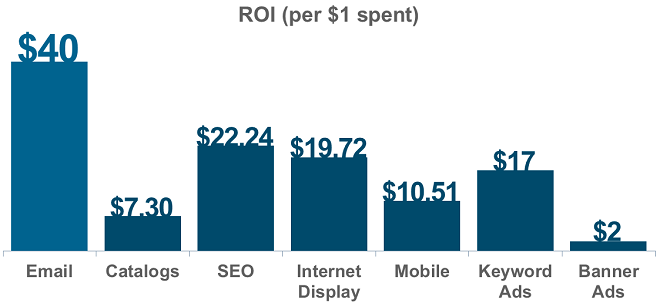
Source: Popupsmart
The formula for calculating campaign ROI is: (Total Revenue Generated from a Particular Campaign ÷ Total Amount Spent on a Particular Campaign) x 100.
Unsubscribe Rate
Unsubscribe rate refers to the percentage of email addresses in your email list that unsubscribes from your email list after receiving and opening an email from you.
Many email addresses will not bother to go through the formal route of unsubscribing from your email. They rather ignore your emails.
To prevent them from hurting your conversion rate, you can remove inactive email subscribers. Email list management is easy, simply check the unsubscribe rate monthly and your email list numbers.
The formula for calculating your unsubscribe rate is: (Sum of Unsubscribes ÷ Number of Email Addresses on the email list) x 100.
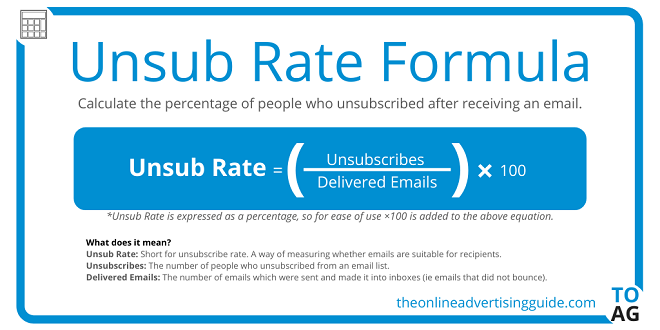
Source: The Online Advertising Guide
Spam Complaints
Spam complaints are another important email marketing metric to track for your email marketing campaign.
The real problem is not when email service providers such as Gmail mark out an email you sent as spam, you can choose to ignore this. However, you should track your spam complaints as they can hurt your email marketing campaigns.
When the number of spam complaints you receive gets alarmingly high, email service providers can block your account. To avoid this, track your spam complaints. A good email service provider helps you track this metric.
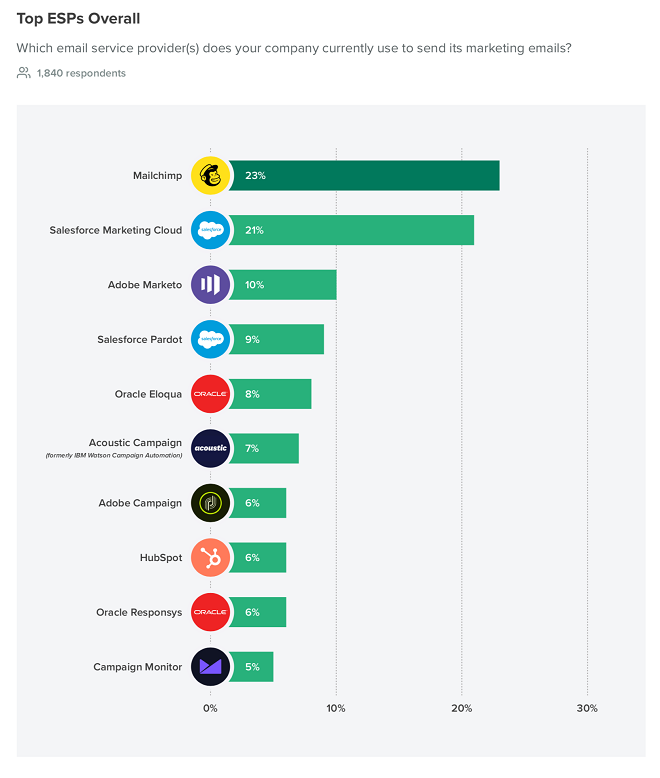
Source: Litmus
The formula for calculating spam complaints is (Number of Spam Complaints ÷ Number of Attempted Sends) x 100.

Source: UK FundRaising
Delivery Rate
The delivery rate is the first email marketing metric you need to track, even before you check the open rate. Email deliverability success is key to the performance of any email marketing campaign.
If your emails do not reach your intended readers, then all the hard work and time used up in crafting the email and generating leads is a waste. Ignoring your delivery rate is saying no to effective time management tips.
The formula for calculating the delivery rate is: (Number of Emails Sent – Number of Bounces ÷ Number of Emails Sent) x 100.

Source: SendPulse
Click-to-Open-Rate (CTOR)
Click-to-open-rate is the number of unique clicks on your email marketing campaign divided by unique opens expressed as a percentage. Many email marketers focus on open and click-through rates and ignore this potent metric.
If you want to get more insights into the level of your email list engagement with your emails, click-to-open-rate (CTOR) is a handy metric to use. A low CTOR is an indication that reveals you are not meeting your subscribers’ expectations.
The formula for calculating click-to-open rate is: (Number of Unique Clicks ÷ Number of Unique Opens) x 100.
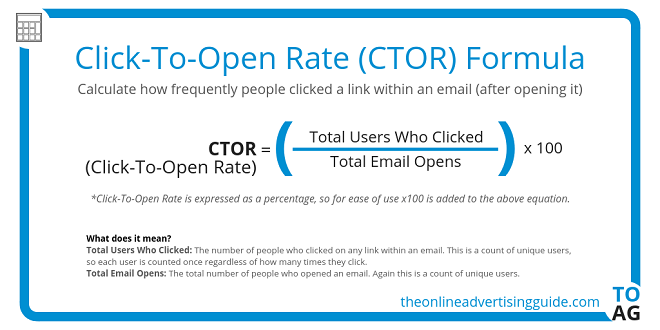
Source: The Online Advertiser Guide
What is the Best Email Marketing Metric You Need to Track?
The best email marketing metric you need to track will depend on the type of email marketing campaign you want to track.
If you run an eCommerce business (selling goods and/or services online), you need to track the following email marketing metrics for eCommerce campaigns. They include email open rate, click-through rate, campaign ROI, click-to-open rate, spam complaint rate, conversion rate, and unsubscribe rate.
You should use the following email marketing metrics to track the channels through which you send emails. They include list growth rate, bounce rate, overall ROI, email sharing or forwarding rate, and delivery rate.
Regardless of what your campaign goal is, keeping track of these 12 critical email marketing metrics will increase the success of your email campaigns.
Recommended Posts

AcyMailing & MEC: A Seamless Integration Guide for 2025
January 28, 2025

Top 5 Email Marketing Tools for Event Promotion in 2025
January 21, 2025

Best Email Integrations for Modern Events Calendar in 2025
December 22, 2024
